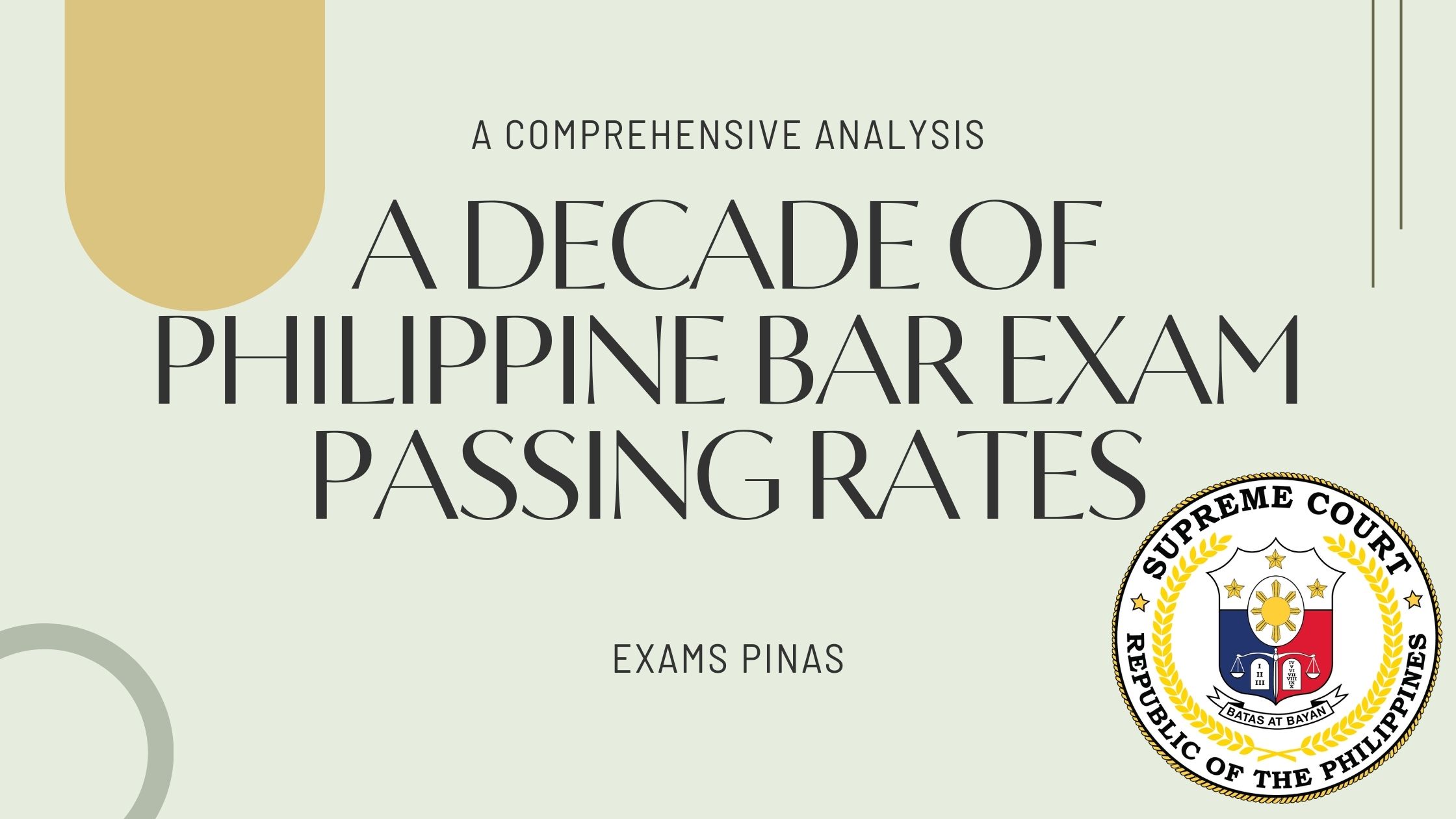The Philippine Bar Exam is a significant milestone for aspiring lawyers, as it determines their eligibility to practice law in the country. Monitoring the passing rates of the bar exams over the past ten years provides valuable insights into the performance and trends within the legal profession. In this article, we will examine the passing rates of the Philippine Bar Exams from 2012 to 2021, highlighting the percentage numbers and exploring factors that may have influenced these rates.
- Philippine Bar Exam Passing Rates from 2012 to 2021:
- 2012: Passing Rate – 17.76%
- 2013: Passing Rate – 22.18%
- 2014: Passing Rate – 18.82%
- 2015: Passing Rate – 26.21%
- 2016: Passing Rate – 59.06%
- 2017: Passing Rate – 25.55%
- 2018: Passing Rate – 22.07%
- 2019: Passing Rate – 27.36%
- 2020: Passing Rate – 27.36%
- 2021: Passing Rate – 26.76%
- Passing Rate Trends: Analyzing the passing rates over the past ten years reveals notable fluctuations. The rates have ranged from a low of 17.76% in 2012 to a high of 59.06% in 2016. While passing rates have generally remained above 20%, there have been instances of lower passing rates, such as in 2014 and 2018. The rates have stabilized around the mid-20% range in recent years.
- Factors Influencing Passing Rates: Multiple factors can influence the passing rates of the Philippine Bar Exams. These factors include the difficulty level of the exam, changes in the composition of examiners, the quality of legal education provided by law schools, the effectiveness of bar review programs, the preparation and study habits of examinees, and socioeconomic factors that may impact the examinee pool’s overall competitiveness.
- Implications and Significance: The passing rate in the bar exams holds great significance for aspiring lawyers and the legal community. Higher passing rates indicate the preparedness and quality of legal education provided, while lower passing rates highlight areas for improvement in both legal education and bar exam preparation. Aspiring lawyers can assess passing rate trends to gauge the level of competitiveness and set realistic expectations for their own bar exam journey.
- Continuous Improvement Efforts: Stakeholders such as law schools, bar review centers, and the Supreme Court are committed to enhancing legal education and supporting examinees in their bar exam preparation. These efforts may include curriculum enhancements, faculty development programs, mentoring initiatives, and the provision of resources and study materials. These initiatives aim to improve passing rates and ensure the competency of future legal professionals.
Analyzing the passing rates of the Philippine Bar Exams over the past decade provides valuable insights into the performance and trends within the legal profession. While passing rates have fluctuated, they generally remain above 20%. The passing rates underscore the need for continuous improvement and adaptation in legal education and bar exam preparation. Aspiring lawyers should approach their bar exam journey with dedication, perseverance, and a commitment to honing their legal knowledge and skills. By understanding passing rate trends and the influencing factors, aspiring lawyers can better prepare themselves for the challenges of the bar exams and contribute to the growth and development of the legal profession in the Philippines.

